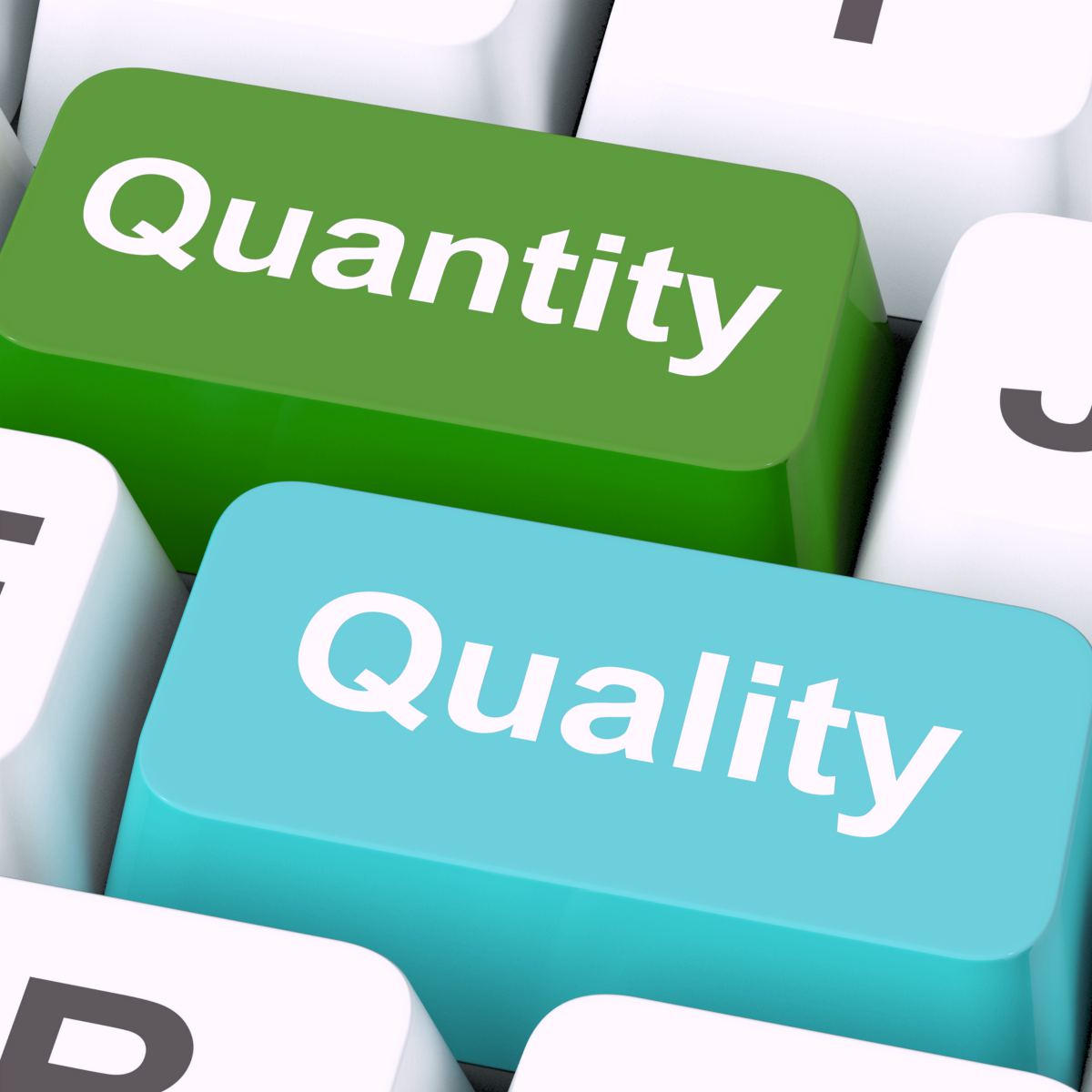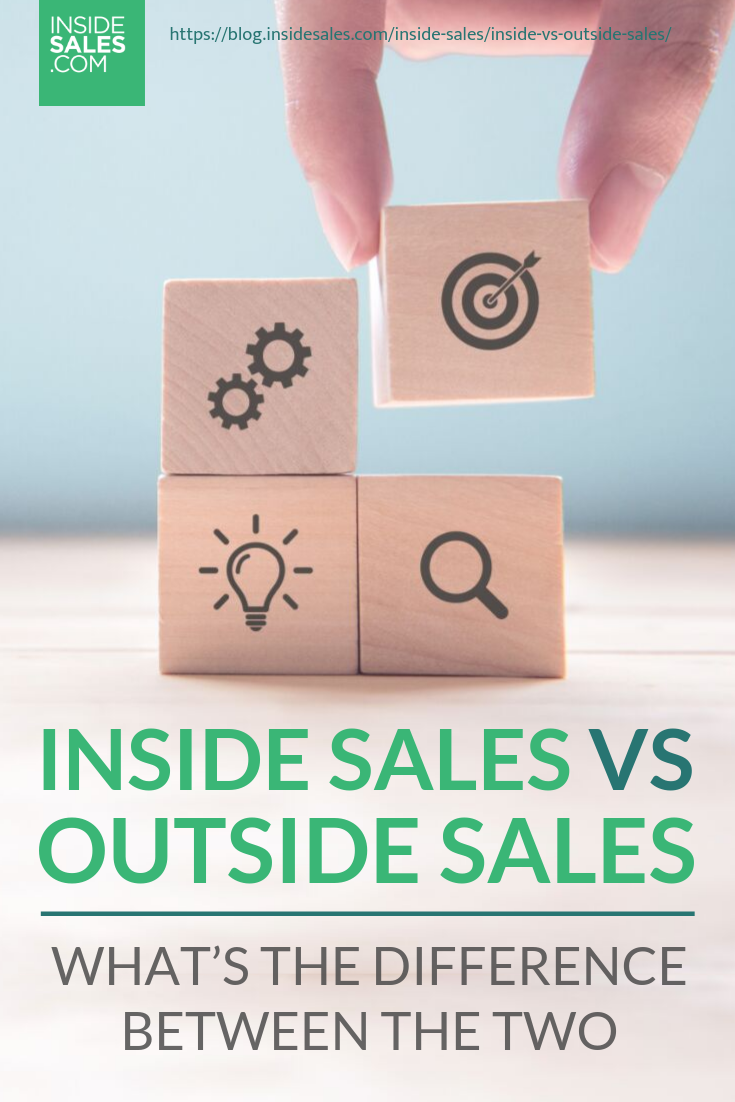Inside Vs Outside Sales: What’s The Difference Between The Two
Which side are you on the inside vs outside sales debate? What is outside sales and how is it different from inside sales? Keep reading to find out how you can differentiate between the two and learn how they work.
RELATED: What Is Inside Sales? — Our Definition of Inside Sales
In this article:
- Variety of Business Tactics
- Quality and Quantity
- Sales Cycle and Conversion
- Qualifications and Skill Sets
- Costing
- Tools Used for Outside vs Inside Sales
- Inside vs Outside Sales Team Structure
- Overall Difference Between Outside and Inside Sales
What Is Outside Sales and How Is It Different from Inside Sales? | Differences Between Inside vs Outside Sales
Inside Sales Definition: Inside sales are sales made from working behind a desk, or “remotely.” It is also known as “remote sales,” as sales reps who practice this communicate with their clients virtually (i.e. through phone or email).
Outside Sales Definition: Outside sales are sales made outside the office. Sales reps who practice this meet up with their clients in person to present and close the deal.
1. Variety of Business Tactics
When you compare inside vs outside sales, you’ll see that each uses business tactics that align with the nature of their work.
Sales reps for outside sales use displays, presentations, and sample products whenever they interact with prospects and clients face to face. These are very effective, as it’s easier for people to process visual references compared to text-based presentations.
This preference for visually-oriented presentations gives outside sales reps an advantage. Since they meet with their clients in person, they can use these kinds of tactics to grab their prospects’ attention and persuade them.
Although inside sales reps engage their prospects and clients remotely, their methods are also catching up with outside sales. Meeting with people through web conferences, for example, closes the distance between all parties.
Through this and online meetings with screen sharing, sales reps can present their offers without meeting prospects and clients in person. Other tactics useful for outside sales are telesales, hosted Customer Relationship Management (CRM), and social media.
Though sales reps employ different business tactics, they all share one goal. All these should lead to closed deals and revenue for the company.
2. Quality and Quantity

Quality and quantity in sales
When it comes to quantity and quality, what are the arguments for each in the inside vs outside sales debate?
Sales reps for inside sales typically have more time to sell, as they stay in the office for most of the day.
They can contact and sell to more people each day, as they don’t have to travel to reach those they’re targeting. This also allows them to target a specific number of people to sell to each day.
While deals closed through inside sales are usually not what you would call “big-ticket,” it doesn’t mean you’ll only yield low-quality customers. What often happens is, the orders that inside sales reps receive are smaller in quantity compared to the ones produced by outside sales reps.
There is a reason why outside sales reps need to meet with their prospects and clients in person. It’s because, typically, what they sell are high-quality, complex products and services that come at steep prices.
They need to properly explain their offers so their target market will understand their need for them.
Due to the travel time they consume, and considering that they’re expected to connect with a specific target market, outside sales reps may sell to fewer customers.
Basically put, you can distinguish between inside sales vs outside sales as follows:
- Inside Sales — Reaches more people, but the revenue from each client may be smaller
- Outside Sales — Reaches less people, but the revenue from each client is generally higher
3. Sales Cycle and Conversion
You’ll also see differences when you compare the sales cycle and conversion of inside and outside sales.
Naturally, inside sales have a shorter sales cycle. This is because of the limited personal interaction between the sales rep and the customer.
On the other hand, field representatives for outside sales will often have longer sales cycles. They also do more legwork.
For instance, if they’re selling in a physical retail store, they need to manage inventory, set up displays, and visit the store regularly.
Sales reps for outside sales are more likely to build stronger relationships with their clients because of the amount of personal interaction they have.
When it comes to converting prospects, field reps have the upper hand. They’re able to convert prospects into clients more often than inside sales reps do.
Yet inside sales is seeing faster growth than outside sales due to its convenience.
4. Qualifications and Skill Sets

Learning about the skills needed for great sales reps
Considering the nature of their work, there are certain qualifications and skill sets that sales reps must possess. Much like how inside and outside sales are different, their sales reps also require different skills.
An inside sales representative must:
- Be Articulate — They must be able to express themselves well. Inside sales reps sell from behind the phone or computer screen, so they should be engaging and persuasive enough to get people to buy from them. They should be able to explain their products and services in an understandable and relatable way.
- Be Collaborative — Inside sales reps work in the office, so they interact with their colleagues every day. They should have a collaborative attitude to be able to work well with the rest of the sales team.
- Have Administrative Skills — Selling isn’t the only thing that inside sales reps do. They also attend to everyday administrative tasks in the office, so they need to balance both sides of the job.
An outside sales representative must:
- Be Able to Work Independently — Outside sales reps are also called “field reps” as they’re the ones who meet with clients to present and close deals. To maximize their time, they should be able to work independently and manage their own schedule and client appointments.
- Be Able to Adapt Well — They meet new people and visit new places often, so outside sales reps must be able to adjust easily to these new environments. Having this quality makes it easier for them to do their job better.
- Always Look Their Best — Compared to inside sales, working in outside sales means reps should be more attentive to how they present themselves. They should always look and be at their best whenever they face prospects and clients.
RELATED: How to Create a Cultural Transformation for Your Inside Sales Team
5. Cost
It’s also worth considering the cost differences between the two, and how each can affect company expenses.
Outside sales is often more costly. This is because field reps have higher entry-level salaries compared to inside sales reps.
They also require additional work allowances to cover their travel and client meeting costs. Paying field reps through commission also makes it a bit more difficult for the company to settle on a set revenue and overhead costs.
Inside sales reps, on the other hand, have a more stable salary range as they have fixed schedules and working hours in the office.
Inside sales also works with cost-efficient platforms, which lessen acquisition expenses. These include the commonly-used CRM databases, web conference platforms, and analytics software.
6. Tools Used for Outside vs Inside Sales
Another thing that differs between inside sales and outside sales are the tools that they use to accomplish their tasks. After all, these two sales have different goals and therefore, needs different tools from one another.
What tools are Inside Sales using?
Since inside sales do most of their jobs remotely, they need to have tools that are able to accommodate that. Inside sales professionals need tools that will help them communicate better with their potential customers.
An inside sales representative doesn’t have the luxury of face-to-face communication in its sales process. Thus, they need tools that will help them improve their communication effectiveness and help them manage customer relationships.
This is where a good CRM comes in.
When it comes to lead generation or sales prospecting, an inside sales agent can be more productive with the help of CRM. It helps automate email marketing, cold calling, and more.
Since CRMs can speed up and increase the rate with which an inside salesperson can connect to a customer, this tool goes well with inside sales strategy.
What is Outside Sales using if not mainly CRM?
On that note, if CRM is the main tool that inside sales use, what does outside sales use then? After all, a field sales representative will hardly have access to software while on the road.
Although most sales technology is catering to inside sales, there are some that outside sales can use. For example, a sales mapping tool might prove useful for managing a sales territory for each rep.
Otherwise, normal equipment like a laptop, your phone, and so on are the usual tools that an outside sales professional uses.
Also, outside sales still has a use for CRM. However, it might not be as extensive as inside salespeople.
7. Inside vs Outside Sales Team Structure
When it comes to creating a sales team, your sales activities and sales position should be determined by whether you’re an outside or inside sales team. Luckily, they aren’t too different and complicated when arranging the sales organizations’ charts.
Inside Sales Team Structure
For the inside sales team, the volume of sales leads and the fast rate with which they are contacted requires the supervision of more staff. Due to this fact, there is more of a need for sales leaders to monitor certain areas of the sales funnel.
One, there is more of a need for professionals who can monitor the weaknesses of sales activities by inside sales reps. Once they see which are the weaker parts of the sales process, they make use of the information to train sales reps for better results.
Two, there is also the need for managers that can help sales reps with issues that crop up during the sales process. Since there is a high volume of leads and prospects, this is an important job for an inside sales team.
Outside Sales Team Structure
On the other hand, the outside sales team structure doesn’t require a lot of staff members. Instead, there is a need for sales reps to be more independent.
Compared to the inside sales team, an outside sales team structure comprises a lot of the usual. A sales manager, account manager, and sales reps.
Of course, for the outside sales team, there is the need for a trainer to keep the outside sales reps up-to-date on everything. From new product initiatives to additional information on the territory, they help train the sales reps overall.
8. Overall Difference Between Outside and Inside Sales
Outside sales and inside sales both have significant differences sales managers must take note of.
They are best used depending on your sales goals and business alignments. This makes their sales strategies more effective.
Aside from that, they both differ in terms of prospecting volume and value. Also, they differ in the sales cycle and conversion length.
Even the skillsets, costs, tools, technology, and team structure differs between two seemingly similar sales approach.
As different as inside and outside sales may be, you can still find ways to incorporate both strategies in your business. It doesn’t always have to be inside vs outside sales — you can create your own strategy to get the best of both worlds.
For instance, your field reps don’t always have to spend the whole day away from the office. They can make calls and set appointments from the office, then travel to the clients’ location to present and close the deal.
This will help you assess if inside and outside sales working together is practical for your sales team and overall business.
Which side are you on the inside vs outside sales debate? How does it help your business? Share your experiences with us in the comments section below!
Up Next:
- 7 Ways to Boost Sales Effectiveness
- Sales Best Practices Every Sales Professional Should Know
- 5 Best Practices to Deal with Phone Anxiety as a Sales Rep
 Editor’s Note: This post was originally published on May 2, 2019, and has been updated for quality and relevancy.
Editor’s Note: This post was originally published on May 2, 2019, and has been updated for quality and relevancy.
